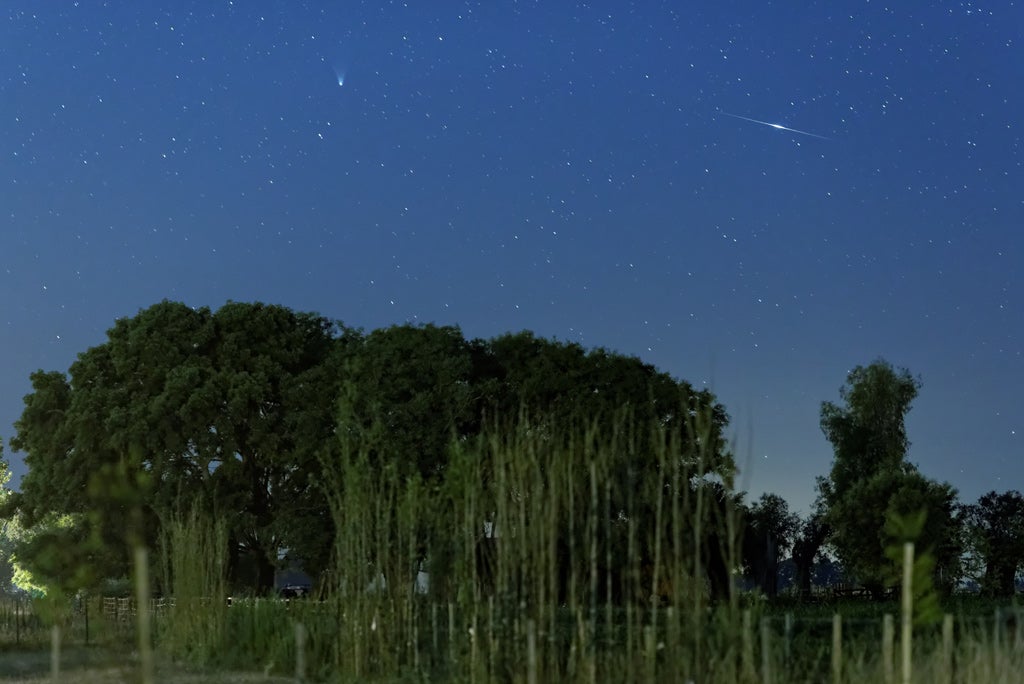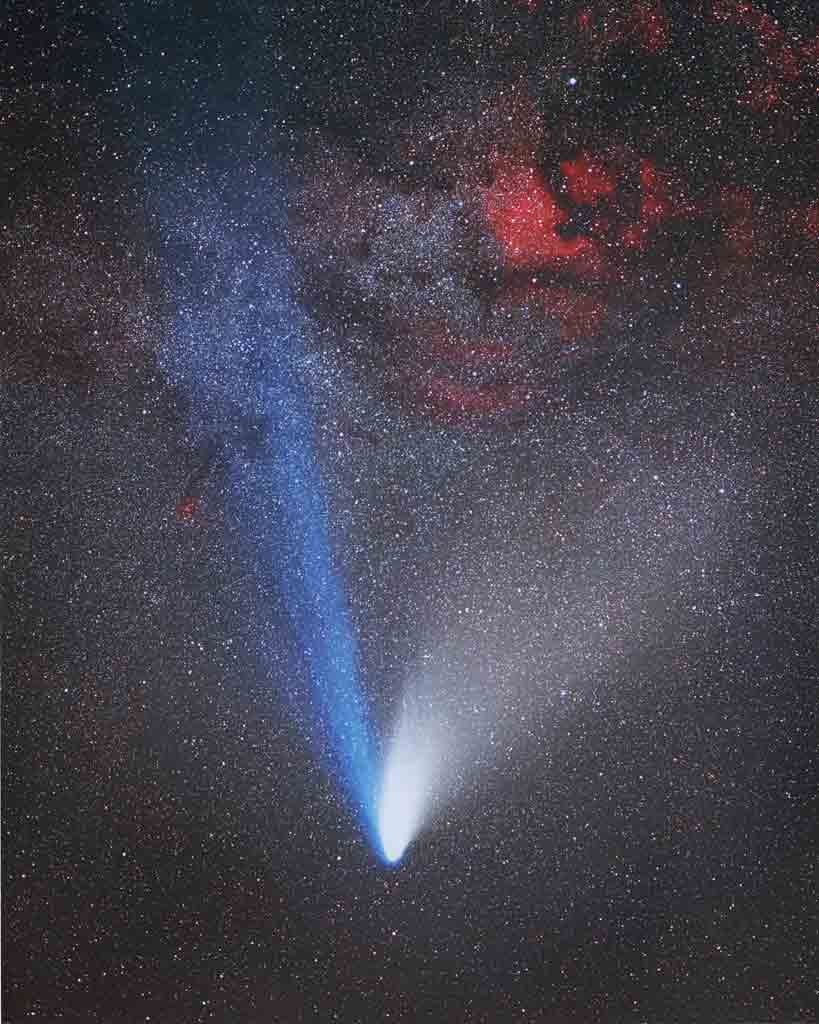TRANSCRIPT
I’m here today to talk about what promises to be the brightest comet during the first half of 2013 and likely one of the brightest comets of the 21st century — so far. Comet PANSTARRS (C/2011 L4) will peak in March and remain bright well into April. If predictions hold, it should be an easy naked-eye object and will look great through binoculars for several weeks.
Astronomers discovered this comet June 6, 2011. As the fourth new comet detected during the first half of June that year, it received the designation “C/2011 L4.” And because researchers first spotted the object on images taken through the 1.8-meter Panoramic Survey Telescope and Rapid Response System on Haleakala in Hawaii, it received the instrument’s acronym, PANSTARRS, as a secondary name. Astronomers credit this scope with more than two dozen comet discoveries, so the “C/2011 L4” designation is more precise even though it’s much easier to say “PANSTARRS.”
The comet is making its first trip through the inner solar system. Its journey began eons ago when a star or interstellar cloud passed within a light-year or two of the Sun. This close encounter jostled the so-called Oort Cloud, a vast reservoir of icy objects that lies up to a light-year from the Sun and probably holds a trillion comets. PANSTARRS has been heading toward the Sun ever since.
For complete coverage of Comet PANSTARRS, visit www.astronomy.com/panstarrs.
Southern Hemisphere observers had the best comet views during February. But by early March, PANSTARRS veers sharply northward and gradually becomes visible in the evening sky for Northern Hemisphere observers. The earliest views should come around March 6 or 7, when it appears a degree above the western horizon 30 minutes after sunset. Each following day, the comet climbs a degree or two higher, which dramatically improves its visibility.
It comes closest to the Sun (a position called “perihelion”) the evening of March 9, when it lies just 28 million miles (45 million kilometers) from our star. It then appears 7° high in the west 30 minutes after sunset. If predictions hold true — never a sure thing when it comes to comets making their first trip through the inner solar system — the comet will be a superb object through binoculars and probably an impressive naked-eye sight. Astronomers expect it to reach magnitude 0 or 1 at perihelion, although no one would be too surprised if it ends up one or two magnitudes brighter or dimmer.
From perihelion to the end of March, the comet moves almost due north through Pisces and Andromeda while its brightness drops by about a magnitude every five days. In the admittedly unlikely event that the tail of PANSTARRS stretches 10° or more March 13, it will pass behind a two-day-old crescent Moon. The comet should glow around 4th magnitude in early April, which would make the extended object visible only through binoculars or a telescope. It passes 2° west of the Andromeda Galaxy (M31) on the 3rd, then crosses into Cassiopeia on the 9th. During the third week of April, the comet fades to 6th magnitude and is visible all night for those at mid-northern latitudes, where it appears highest before dawn.
The circular head, known as the “coma,” masks the comet’s nucleus. The nucleus is a ball of ice and dust that typically measures a mile or two across. As sunlight hits the nucleus, the ices boil off, and the process liberates dust particles. This cloud of gas and dust forms the coma, which can span a million miles or more. Sunlight removes electrons from the ejected gas molecules, causing then to glow with a bluish color. The solar wind carries this gas away from the comet, creating a straight bluish gas tail. The ejected dust gets pushed away from the Sun more gently, so it forms a curving tail. The dust particles simply reflect sunlight, so the dust tail has a white to pale-yellow color. Although Comet McNaught didn’t show much of a gas tail when it achieved fame in 2007, it more than made up for it with a 30°-long curving dust tail.
Will PANSTARRS rival Hale-Bopp or McNaught? The best way to find out is to plan a few observing sessions for this March and April. Even if PANSTARRS falls short of greatness, goodness is a fine attribute when it comes to comets. And remember that 2013 isn’t over yet. November and December should provide exceptional views of Comet ISON (C/2012 S1), which could be 100 times brighter than PANSTARRS. I’ll be back later this year with more details on viewing Comet ISON.
- Special Coverage: Find everything you need to know about Comet PANSTARRS in Astronomy.com’s Year of the Comet section.
- StarDome: Locate Comet C/2011 L4 (PANSTARRS) in your night sky with our interactive star chart. To ensure the comet is displayed, click on the “Display…” drop-down menu under Options (lower right) and make sure “Comets” has a check mark next to it. Then click the “Show Names…” drop-down menu and make sure “Comets” is checked there, too.
- Images: Submit images of Comet PANSTARRS to our Online Reader Gallery.
- Discussion: Ask questions and share your observations in our Reader Forums.
- Sign up for our free weekly e-mail newsletter.












